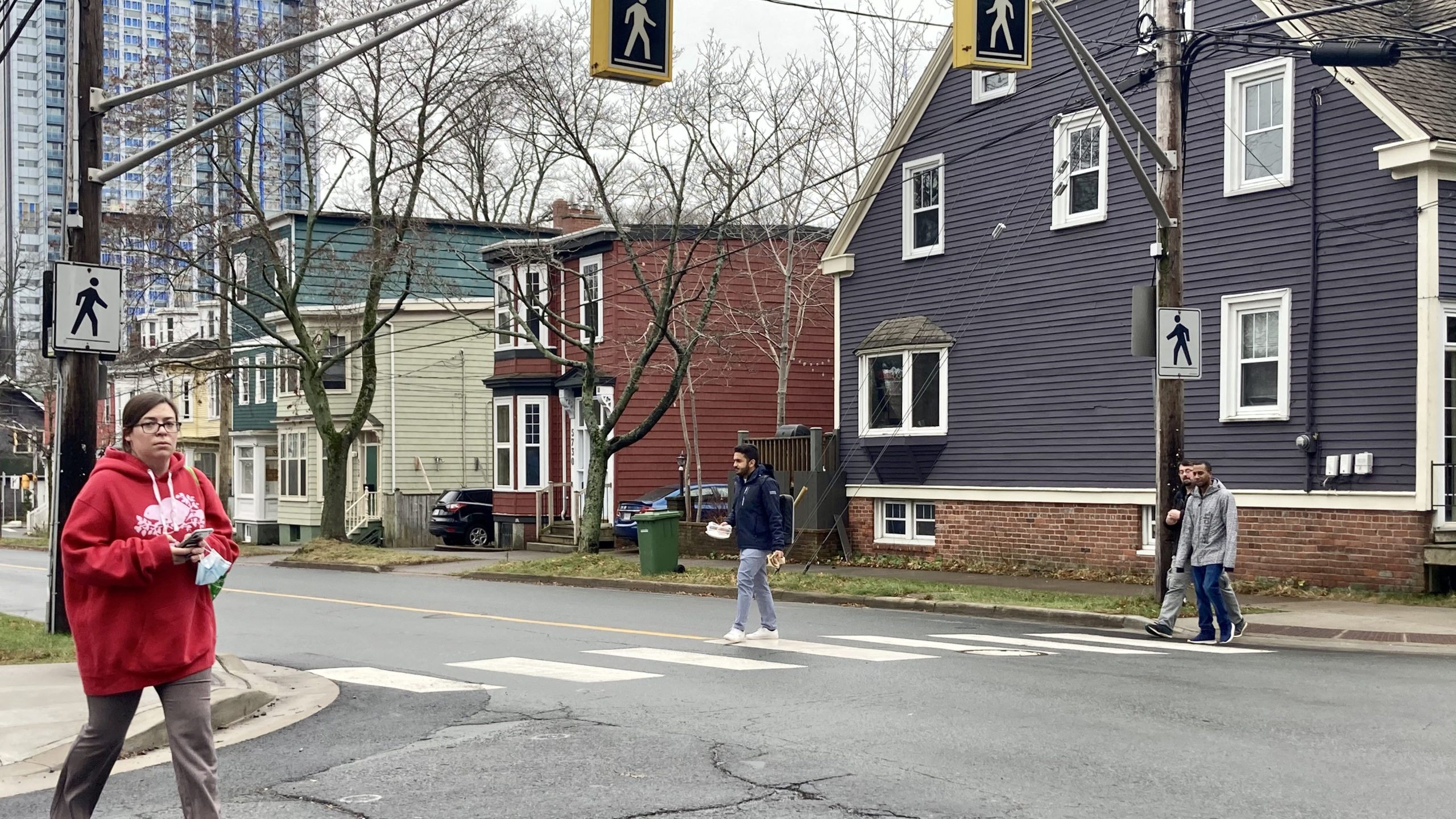Committee wants to update Halifax crosswalk rules
Councillor says new policy would help with pedestrian safety in HRM

caption
Pedestrians use a crosswalk on South Street in Halifax.A Halifax council committee wants staff to look at changing the way new crosswalks are painted on city streets.
The transportation standing committee passed a motion on Thursday asking staff to take into account several new factors when determining the location of safe crossings.
HRM’s traffic authority would have to consider projected crossing demand, pedestrian compliance and crash history. It would also recognize “the practice of discouraging pedestrian crossings by leaving uncontrolled crossings unmarked is not a valid safety measure” when placing crosswalks.
The motion, which was put forwarded by Coun. Shawn Cleary, would move beyond pedestrian counts, reassess existing crosswalks, and prioritize areas close to schools, walking routes, and parks and trails. Related stories
The traffic authority is in charge of signs, sidewalks, crosswalks, and anything used to manage traffic across the region. It is authorized by the province’s Motor Vehicle Act and mostly works outside the municipal political process.
Under the Motor Vehicle Act, the province refers to the Transportation Association of Canada guidelines, which suggests approximately 15 pedestrians need to cross every hour over a seven-hour period to warrant a crosswalk.
“What we’re looking to do is see if those rules can be updated to address some of the challenges we have faced,” Coun. Paul Russell said in an interview.
Russell, the representative for District 15, said the pedestrian counts don’t capture the entire need for marked crosswalks on many busy and unsafe streets in HRM.
Pedestrian safety
Nearly 60 pedestrians have been hit by vehicles in HRM this year, says Halifax Regional Police. Two people died after being struck be a vehicle, two people were seriously injured, and 17 moderately injured.
Those numbers are down from last year. At the same point in 2019, 105 pedestrians had been hit by vehicles, three people were killed, five seriously injured, and 24 moderately injured.
Norm Collins, president of the Crosswalk Safety Society of Nova Scotia, doesn’t think the streets are getting safer. He believes the numbers are down because COVID-19 has resulted in less traffic.
Collins said HRM would be taking a step in the right direction with this motion, especially if HRM realized that discouraging pedestrian crossings by leaving uncontrolled crossings unmarked is not a valid safety measure.
More still needs to be done to improve pedestrian safety, he said, and it requires a combination of solutions. He believes it needs to involve pedestrians, drivers, police enforcement, and traffic engineering.
“We don’t even have the guts to ban right hand turns at red lights,” he said in an interview Friday.
Russell agrees the crosswalk motion is only going to fix part of the overall problem. He said Halifax also needs to look at improving sidewalks to keep pedestrians safe.
“One solution won’t fit all,” Russell said.
Collins, who helped install almost 200 crosswalk flags across HRM, still feels the city can do more. He points to Oslo in Norway, a city that is twice the size of Halifax but had zero pedestrian and cyclist fatalities in 2019.
“Halifax traffic is a follower, not a leader,” Collins said.


K
Kevin Schwenker
R
Rod Corkum
P
Paul Schwartzentruber
P
Paul Migel